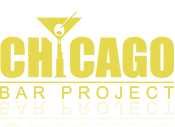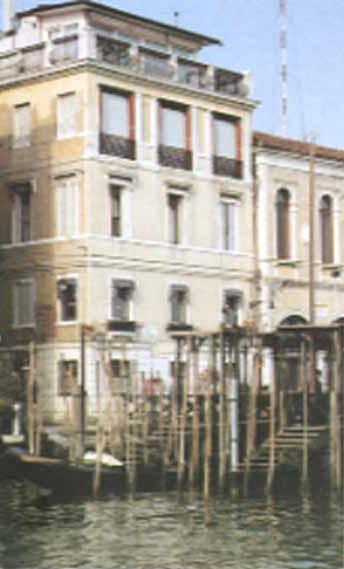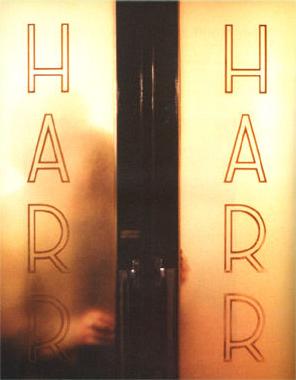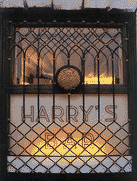 Ah, Harry’s Bar. Much like Venice itself, this legendary Venetian bar is often maligned by tourists aplenty though loved by celebrities and aristocracy, including Truman Capote, Orson Welles and Ernest Hemingway himself who wrote about Harry’s Bar in his book Across the River and into the Trees. It is quite difficult to find a decent bar in places like Venice, and Rome for that matter, unless it is a British, Scottish or Irish pub (though the Black Falcon in Rome is highly recommended). Instead, cafés, trattorias and ristorantes are where the locals tend to spend their time while out and about. So, when one likes a good watering hole and runs across a place like Harry’s, one can get their hopes up—but upon arriving, one finds a small room of minimalist décor and, after one glance at the menu, one finds it hard to avoid the feeling of sticker shock. However, one has to remember not to judge a book by its cover. The charm of Harry’s Bar lies with the owner, head bartender and other white-jacketed staff that exhibit an attitude of warm welcoming, quick wit and an inventiveness that led to the creation of the Bellini, the Montgomery and Carpaccio. As one internet reviewer once posted, “You can’t enjoy this place unless you can forget about the money,” and if you can, you’ll love Harry’s Bar.
Ah, Harry’s Bar. Much like Venice itself, this legendary Venetian bar is often maligned by tourists aplenty though loved by celebrities and aristocracy, including Truman Capote, Orson Welles and Ernest Hemingway himself who wrote about Harry’s Bar in his book Across the River and into the Trees. It is quite difficult to find a decent bar in places like Venice, and Rome for that matter, unless it is a British, Scottish or Irish pub (though the Black Falcon in Rome is highly recommended). Instead, cafés, trattorias and ristorantes are where the locals tend to spend their time while out and about. So, when one likes a good watering hole and runs across a place like Harry’s, one can get their hopes up—but upon arriving, one finds a small room of minimalist décor and, after one glance at the menu, one finds it hard to avoid the feeling of sticker shock. However, one has to remember not to judge a book by its cover. The charm of Harry’s Bar lies with the owner, head bartender and other white-jacketed staff that exhibit an attitude of warm welcoming, quick wit and an inventiveness that led to the creation of the Bellini, the Montgomery and Carpaccio. As one internet reviewer once posted, “You can’t enjoy this place unless you can forget about the money,” and if you can, you’ll love Harry’s Bar.
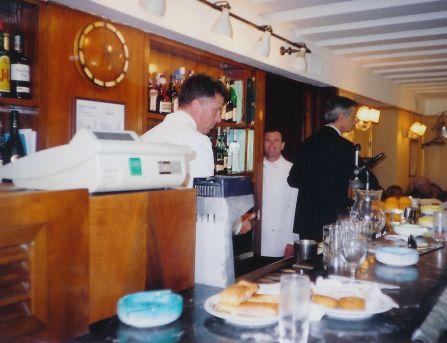 Harry’s Bar can be found at the stony base of a four story building on Calle Vallaresso, just down from the Piazza San Marco – where the pigeons outnumber the tourists. Like so many American tourists have before, push your way in through the narrow pair of doors with frosted glass and “Harry” vertically stenciled upon each side. Upon entering Harry’s Bar, the following question inevitably comes to mind: “Where’s the rest of it?” just as it did before my three traveling companions and I had to cram six suitcases into an Italian rental car in Florence… Harry’s Bar is a wee, single room with a linoleum floor, beige colored walls and a low ceiling of white. If you’re lucky, you’ll find a seat at the abbreviated bar in the northeast corner of the room, offering a handful of smallish, padded wooden stools, or at a smattering of low-slung wooden tables and chairs that is complimented only by a sprinkling of tastefully framed paintings of Venetian scenes and characters. A few tiny, highly placed windows of frosted glass do not offer a view of the Grand Canal, though the bar is located directly on its east bank, but they do let in a fair bit of light by day, brightening up the place considerably. The evening brings with it a darker atmosphere, much more to my liking personally. A portal through the eastern wall presents a wooden staircase leading up to the restaurant, which will not be covered here – all I will say is that the restaurant was not originally part of the bar, and Carpaccio was first served here, being named after Vittore Carpaccio whose paintings often featured deep reddish colors, just as the dish of thinly slice sirloin. The food is priced here in a way that makes the cocktails seem like a bargain.
Harry’s Bar can be found at the stony base of a four story building on Calle Vallaresso, just down from the Piazza San Marco – where the pigeons outnumber the tourists. Like so many American tourists have before, push your way in through the narrow pair of doors with frosted glass and “Harry” vertically stenciled upon each side. Upon entering Harry’s Bar, the following question inevitably comes to mind: “Where’s the rest of it?” just as it did before my three traveling companions and I had to cram six suitcases into an Italian rental car in Florence… Harry’s Bar is a wee, single room with a linoleum floor, beige colored walls and a low ceiling of white. If you’re lucky, you’ll find a seat at the abbreviated bar in the northeast corner of the room, offering a handful of smallish, padded wooden stools, or at a smattering of low-slung wooden tables and chairs that is complimented only by a sprinkling of tastefully framed paintings of Venetian scenes and characters. A few tiny, highly placed windows of frosted glass do not offer a view of the Grand Canal, though the bar is located directly on its east bank, but they do let in a fair bit of light by day, brightening up the place considerably. The evening brings with it a darker atmosphere, much more to my liking personally. A portal through the eastern wall presents a wooden staircase leading up to the restaurant, which will not be covered here – all I will say is that the restaurant was not originally part of the bar, and Carpaccio was first served here, being named after Vittore Carpaccio whose paintings often featured deep reddish colors, just as the dish of thinly slice sirloin. The food is priced here in a way that makes the cocktails seem like a bargain.
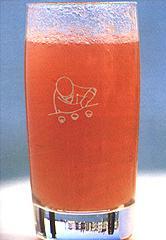 During my recent visit, we were fortunate enough to be placed at one of the best seats in the house – a larger rectangular table underneath a nice painting of canals of Venice, though perhaps not as noteworthy as the Senator’s Table, with its brass plate marking it as such. By not being one for clubs or hotel bars, my eyes nearly bugged out of my head as I perused the menu. Cocktails started at €14 and worked their way up, not including a €2 cover charge and tip.
During my recent visit, we were fortunate enough to be placed at one of the best seats in the house – a larger rectangular table underneath a nice painting of canals of Venice, though perhaps not as noteworthy as the Senator’s Table, with its brass plate marking it as such. By not being one for clubs or hotel bars, my eyes nearly bugged out of my head as I perused the menu. Cocktails started at €14 and worked their way up, not including a €2 cover charge and tip.
Fortunately, the Bellini is the least expensive option, as it is made in large batches, and it is the most famous at Harry’s. The dark pink concoction is mixed with two-thirds chilled Prosecco and one-third white peach juice, properly served only if the peach juice is poured first. The Bellini was created in 1948 and named after the 15th century Venetian painter, Giovanni Bellini, because of the pink glow from one of his paintings (perhaps one of his Madonna with Child works) from the exhibition in Venice that year. The secret at Harry’s is not to order the standard Bellini, but rather the No. 1 and No. 2, which are a bit higher in price but have much more alcohol and value.
The Montgomery was also created at Harry’s Bar, named after the British World War II General, Bernard Montgomery, because its 15:1 proportion of gin to vermouth matched the same proportion of British to German troops that the general preferred. (Who wouldn’t?) The resulting dryness of the Montgomery perhaps matches that of the its namesake, and it is said that the creation only became popular after Hemingway ordered it at the bar. If you’re a bit peckish, the secret is to ask for a panini, which are not advertised on the menu but are served for only €5. Though this may seem strange because it’s a bar, no beer is served at Harry’s. If you’ve had Italian beer, you realize that you’re not missing much.
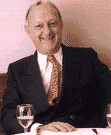 Both libations were created by Giuseppe Cipriani, the original owner and man behind Harry’s Bar. As legend has it, Giuseppe opened the bar in 1932 after receiving a windfall from Harry Pickering, who he had lent money to money to three years prior after Harry had been cut off from the family fortune due to his propensity for drinking. The loan put Harry into a position to earn his way back into the good graces and monetary pipeline of his family, and Giuseppe was compensated generously for his good deed and he named his new establishment after Harry. In 1958, Giuseppe opened up a hotel and left Harry’s Bar to his son, Arrigo Cipriani, born the year after Harry’s opened and who runs it today. “Arrigo” is the Italian equivalent of Harry’s, and he carries on the same traditions as his father: service with a smile and never refuse an individual diner a place to sit, as lonely travelers should at least be fed, although those wearing shorts will be summarily refused just like pretty much everywhere else in Italy (including the museums). Speaking of dress codes, there isn’t one aside from the shorts, so the defacto American uniform of jeans, t-shirts and gym shoes (or trainers) are acceptable to gain entry, though no to gain respect.
Both libations were created by Giuseppe Cipriani, the original owner and man behind Harry’s Bar. As legend has it, Giuseppe opened the bar in 1932 after receiving a windfall from Harry Pickering, who he had lent money to money to three years prior after Harry had been cut off from the family fortune due to his propensity for drinking. The loan put Harry into a position to earn his way back into the good graces and monetary pipeline of his family, and Giuseppe was compensated generously for his good deed and he named his new establishment after Harry. In 1958, Giuseppe opened up a hotel and left Harry’s Bar to his son, Arrigo Cipriani, born the year after Harry’s opened and who runs it today. “Arrigo” is the Italian equivalent of Harry’s, and he carries on the same traditions as his father: service with a smile and never refuse an individual diner a place to sit, as lonely travelers should at least be fed, although those wearing shorts will be summarily refused just like pretty much everywhere else in Italy (including the museums). Speaking of dress codes, there isn’t one aside from the shorts, so the defacto American uniform of jeans, t-shirts and gym shoes (or trainers) are acceptable to gain entry, though no to gain respect.

“Ernest Hemingway was a regular; when he wasn’t picking a fight with Sinclair Lewis or drinking all Venice under the table, he would take a case of wine to his room and stay up all night writing, leaving the empties in front of his door to be picked up the next morning. It was in Venice that Hemingway wrote Across the River and into the Trees a few years before he won the Nobel Prize. Orson Welles was another frequent customer; big as an armoire, he would devour shrimp sandwiches by the dozen and wash them down with two bottles of iced Dom Perignon. Generous but disorganized, he often forgot to pay the check.”
– excerpt from Arcade Publishing’s summary of Arrigo Cipriani’s book Harry’s Bar;The Life and Times of the Legendary Venice Landmark
Though an occasional member of the glitterati may appear, the crowd at Harry’s is predominantly tourists, most of whom are American, along with a sprinkling of Brits, Germans and Spaniards mixed in – most of whom leave after the obligatory drink, if they stay that long. Many just poke their head in, get a picture of themselves at the bar, demand to know where Hemingway sat, and then hightail it out of there. I have to admit that I was suckered into going to Harry’s Bar purely because my Eyewitness Italy guidebook mentioned that the saloon had been a favorite of Hemingway’s and, being a hack-writer, I fancied the association. My initial reaction was to flee, but I now wish that I had enjoyed the moment for a little longer, and I long to go back, talk to Claudio (the head bartender of over 35 years) and spend an evening with the locals.
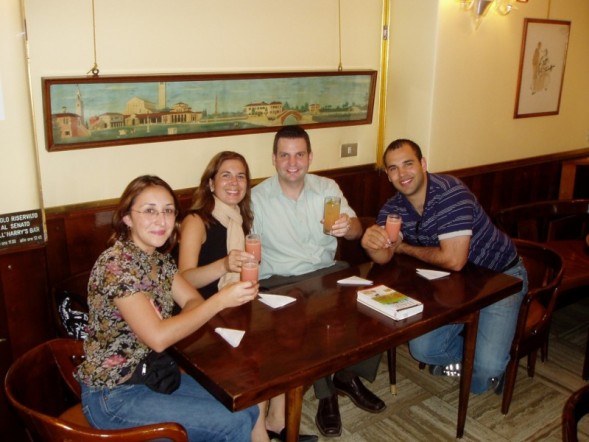 Los Indigentes
Los Indigentes €65 poorer after a round of drinks at Harry’s Bar
€65 poorer after a round of drinks at Harry’s Bar
“A group of five Americans were simply the most horrendous table-neighbours we could never have wished to meet. They continually shouted, screeched, guffawed and thoroughly spoiled the snooty, overrated and lacklustre atmosphere. Hey, we wanted to people-watch, star-spot and mingle with Venice’s platinum crowd for God’s sake. After an hour, I thought that perhaps our friends across the pond had the right idea. Give me a good old British pub with a bit of character and less of the snobby, ‘you’re lucky you got in’ attitude.”
– excerpt of TripAdvisor review by “Julie 342” (August 29, 2005)
Upon leaving Harry’s Bar, I remember zig-zagging our way through the narrow, maze-like Venetian streets when a school nearby let out and hundreds of school children overwhelmed us, along with a very hairy dog that came at us like a furry missile. I got a good belly laugh out of it when my wife screamed…

Few bars have met with such international acclaim and derision. Rather than being swayed this way or that, I would urge you to make up your own mind and visit Harry’s Bar while in Venice, which is a city that everyone in the world should travel to at least once in their lifetime. Harry’s has a second location in Venice called Harry’s Dolci, as well as additional locations in New York, London, Hong Kong, and Porto Servo, the result of expansion over the last two decades. There are many other joints called Harry’s Bar that have absolutely no affiliation with the bar other than a contrived, imaginary one. For more information, check out the Harry’s Bar website. Arriva derche!
Ernest Hemingway on his book, Across the River and into the Trees:
“The book came to me in a sort of a haze, in Harry’s Bar in Venice. Harry’s Bar is a small place but it is in effect a microcosm of all of that great and beautiful city which has been so well described by those writers Ruskin, Sinclair Lewis, Byron, and others.
“In Venice, in Harry’s Bar, which has become almost a sacred place for those of us who know it and who have enjoyed both the credit and the hospitality of Cipriani…
“…during which, the colonel, who is continuously in Harry’s Bar, known to the local residents or ‘indegentes’ as ‘Cirpriani’s,’ is continuously drunk due to his own efforts and his credit with Signor Cipriani.”
 Harry’s Bar by Arbit Blatas
Harry’s Bar by Arbit Blatas
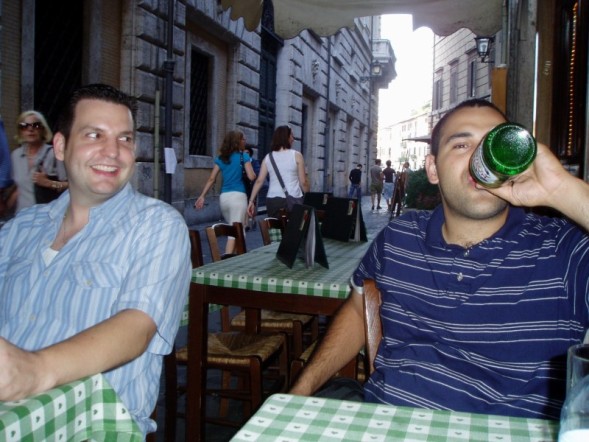 Degenerates in Rome
Degenerates in Rome
